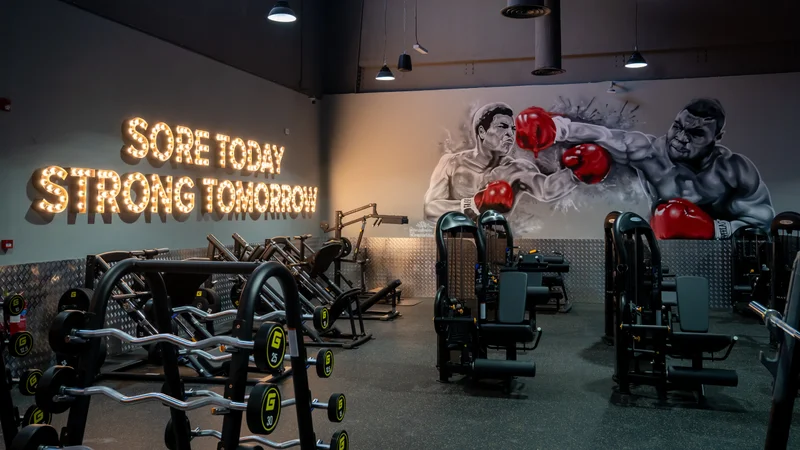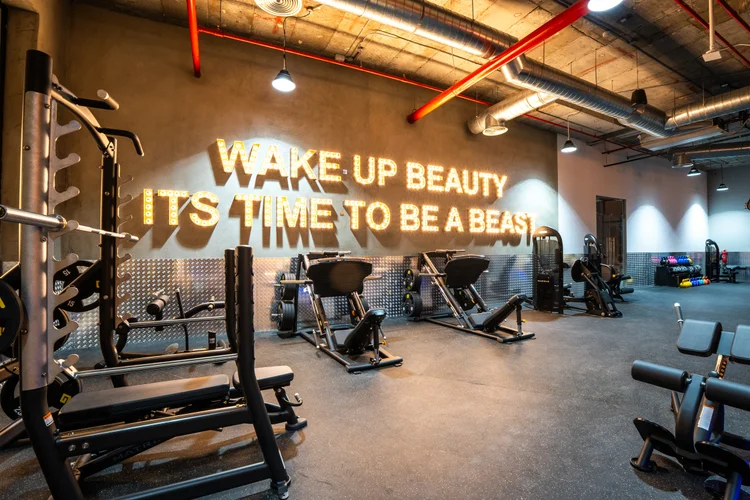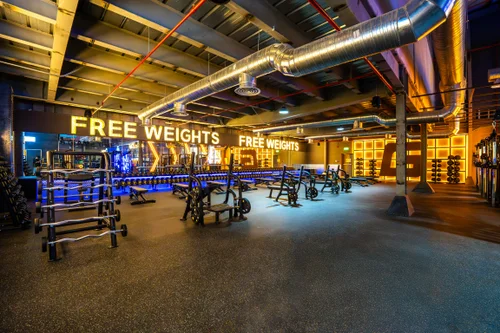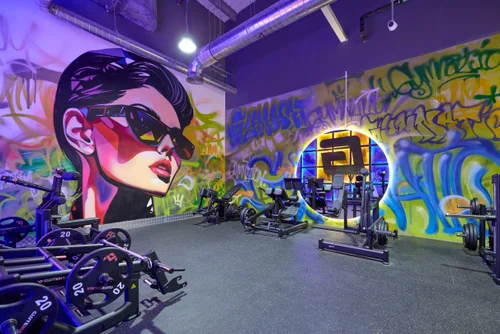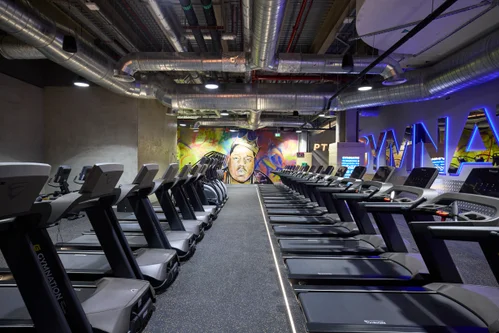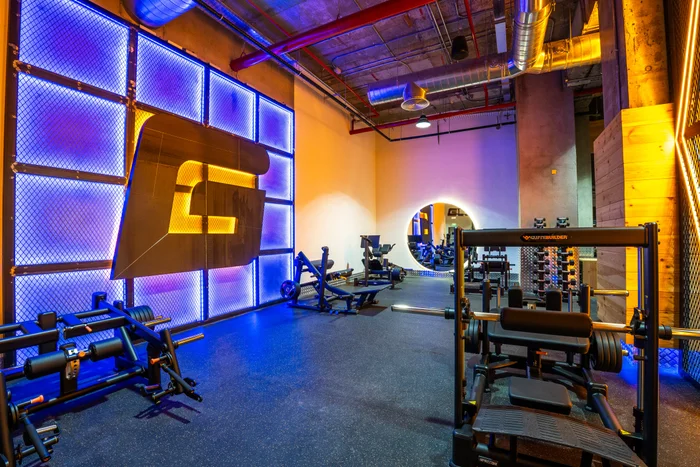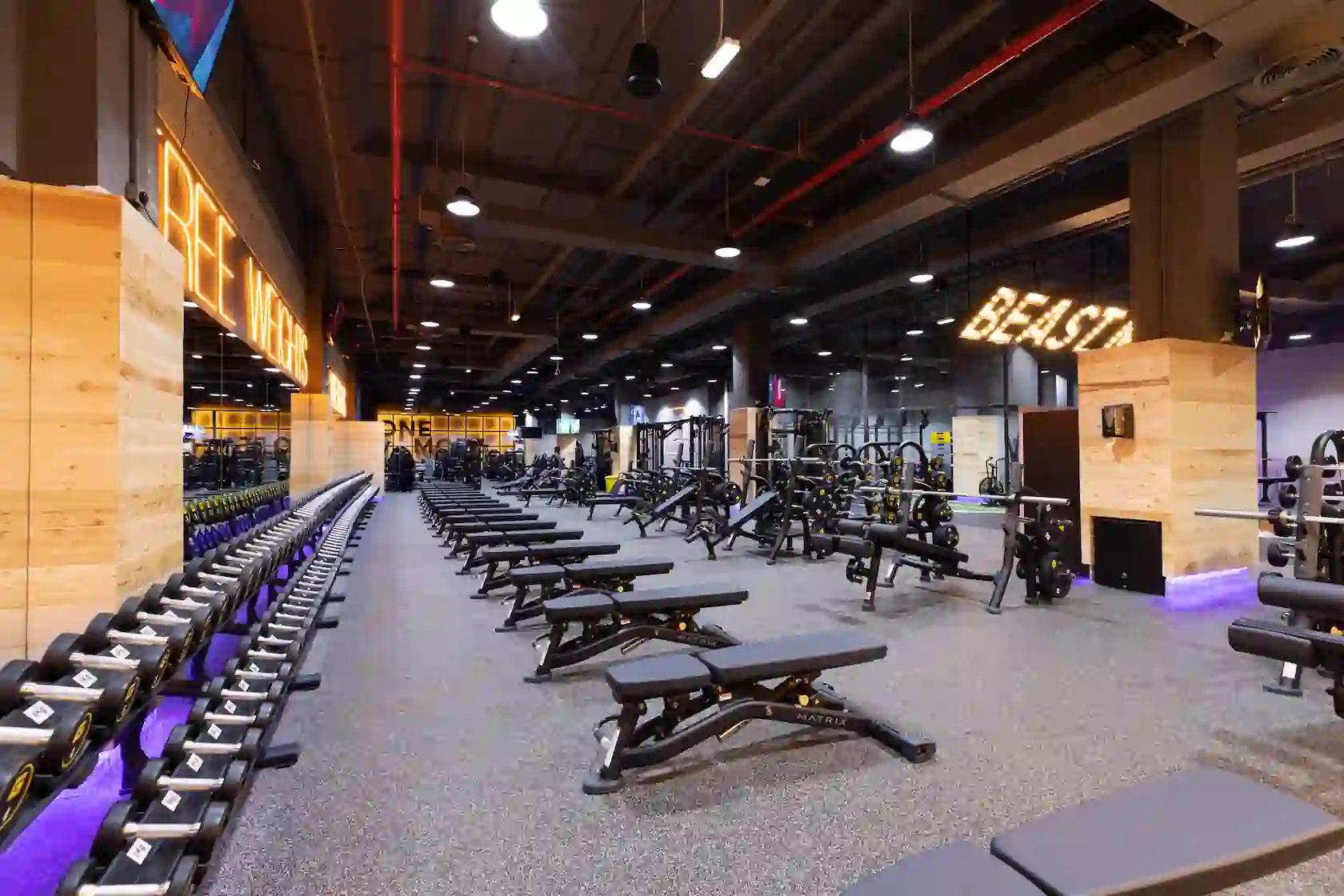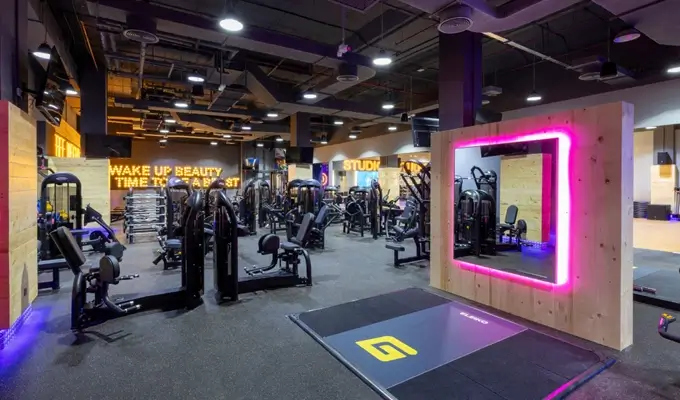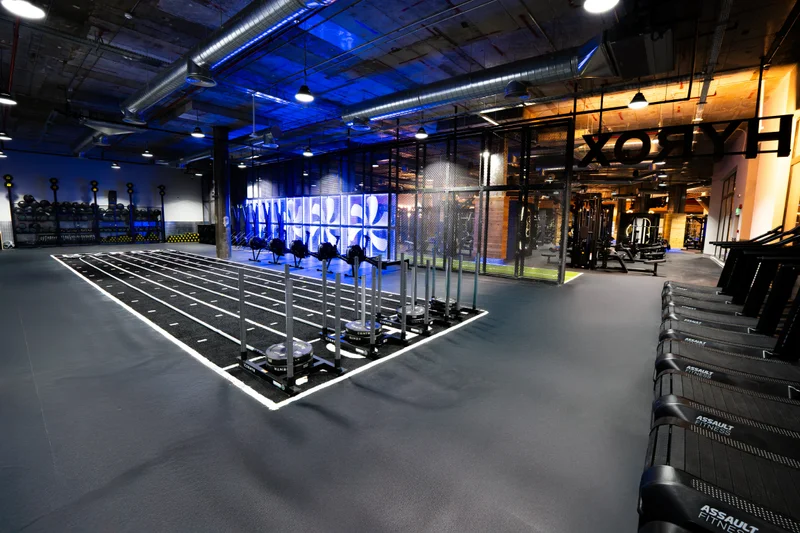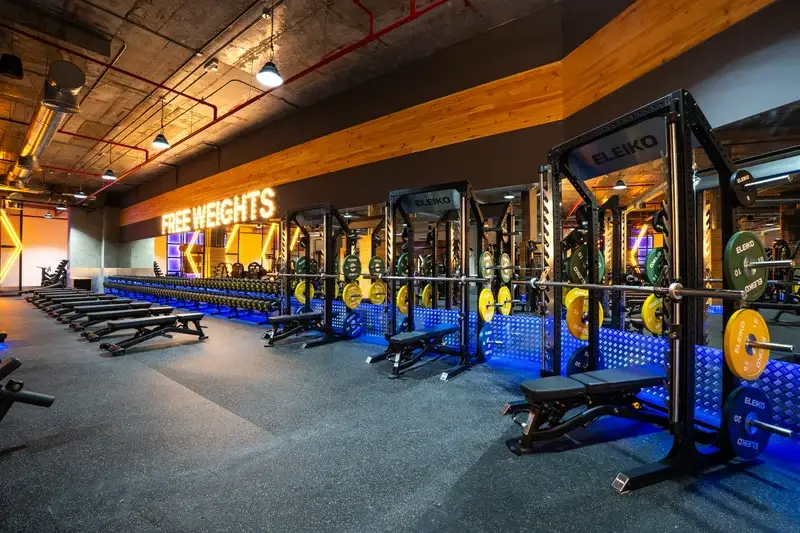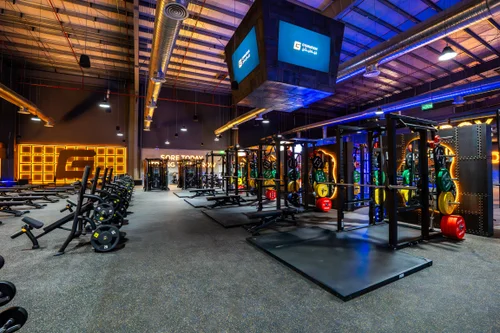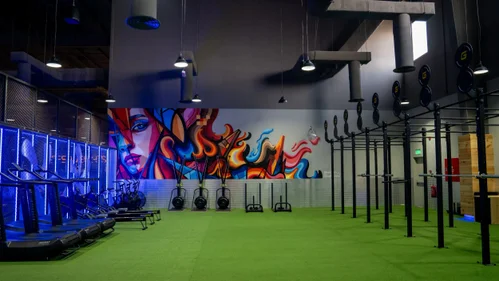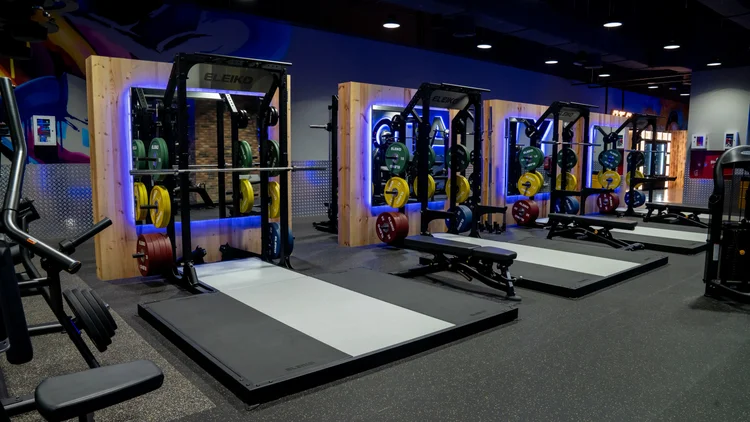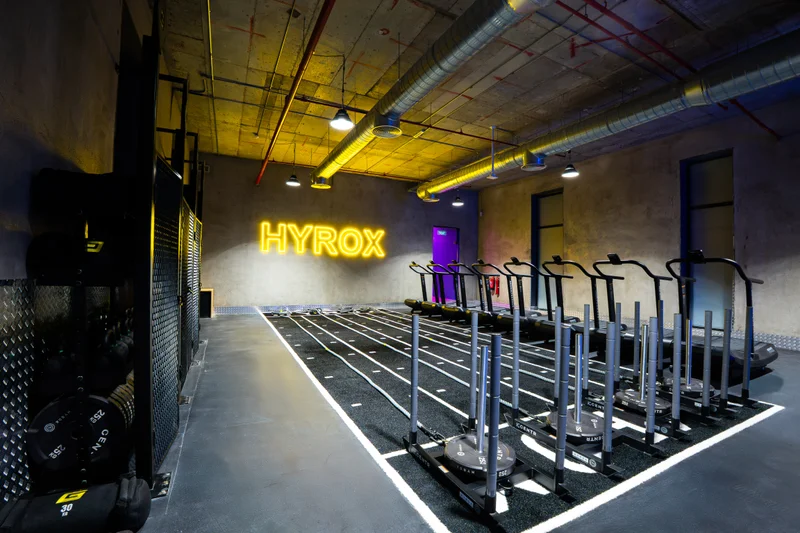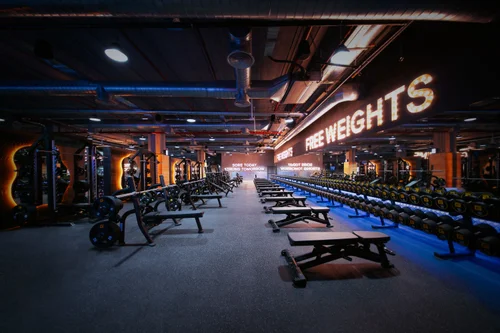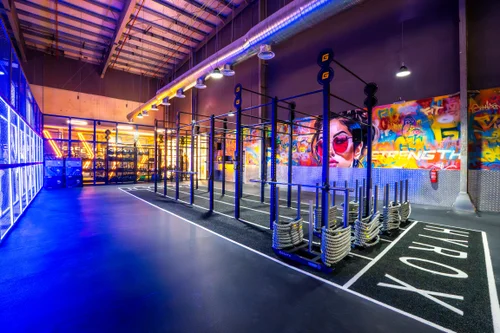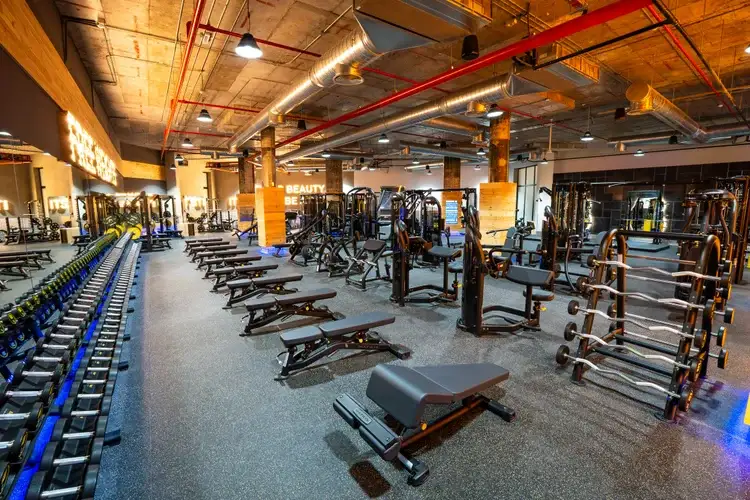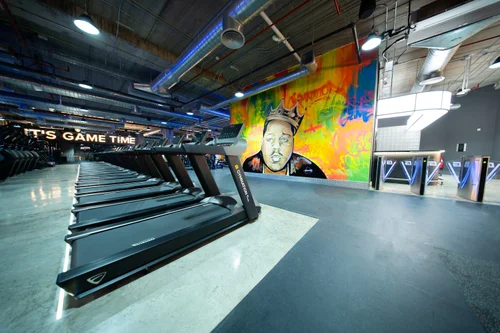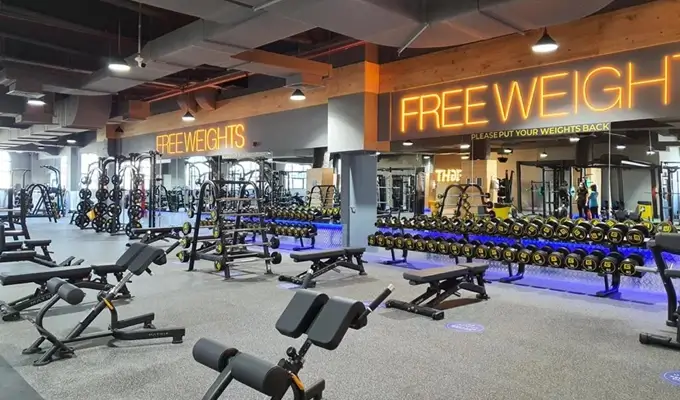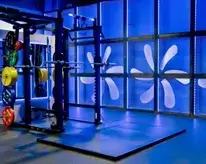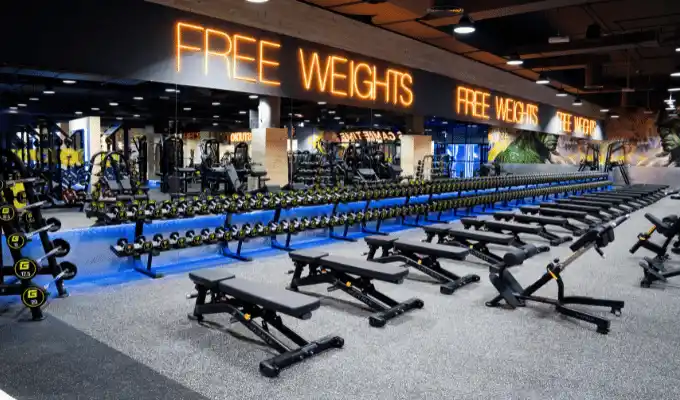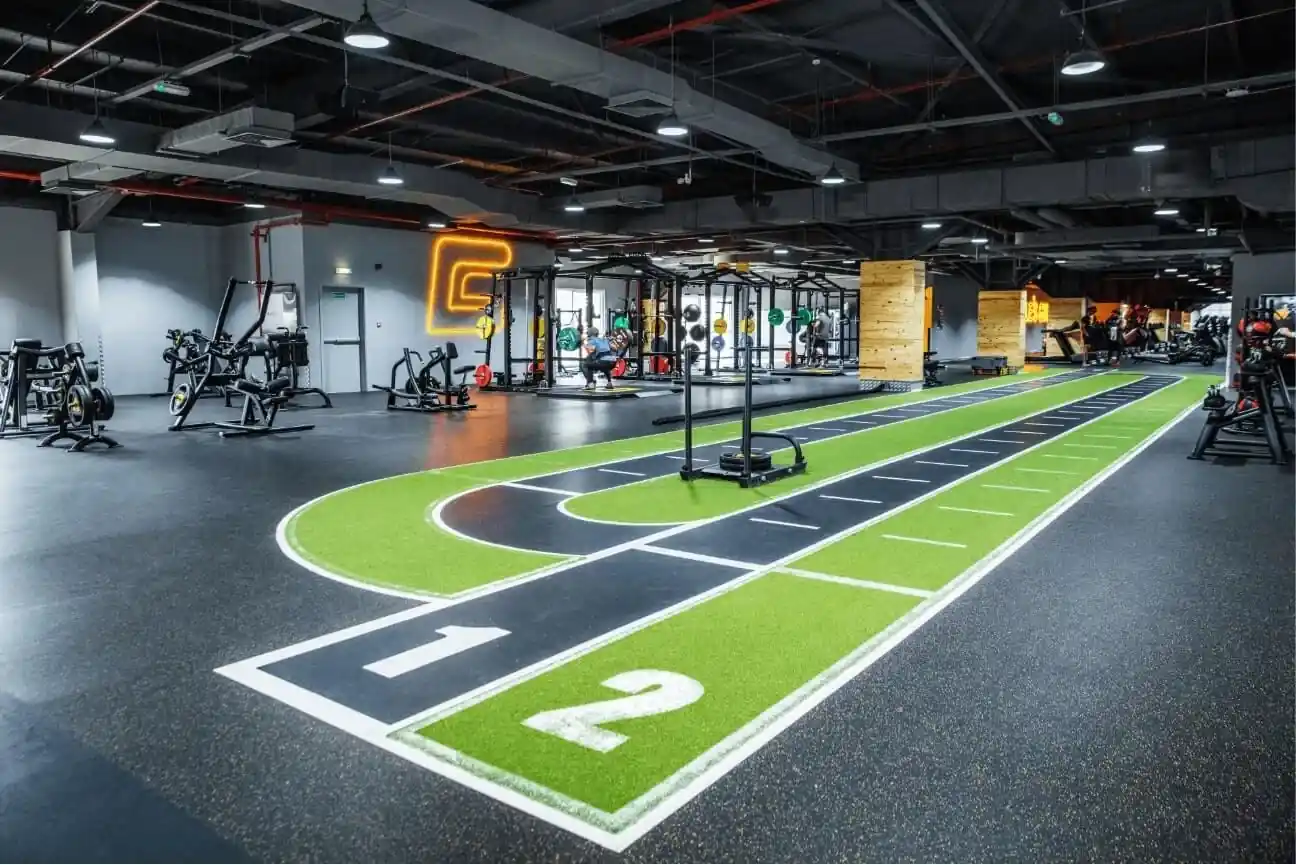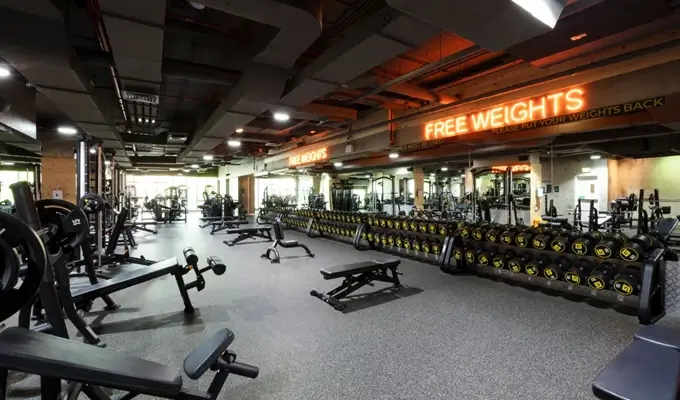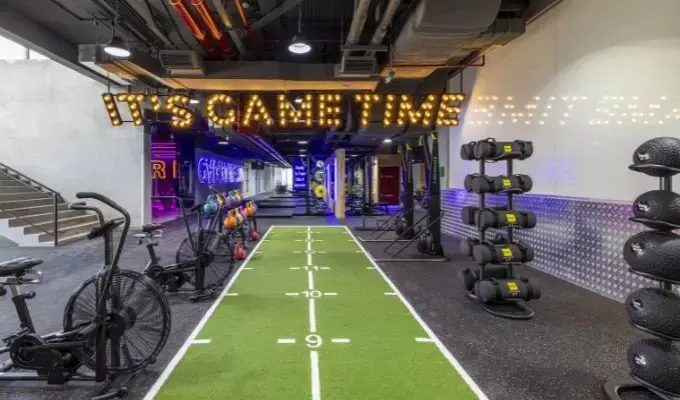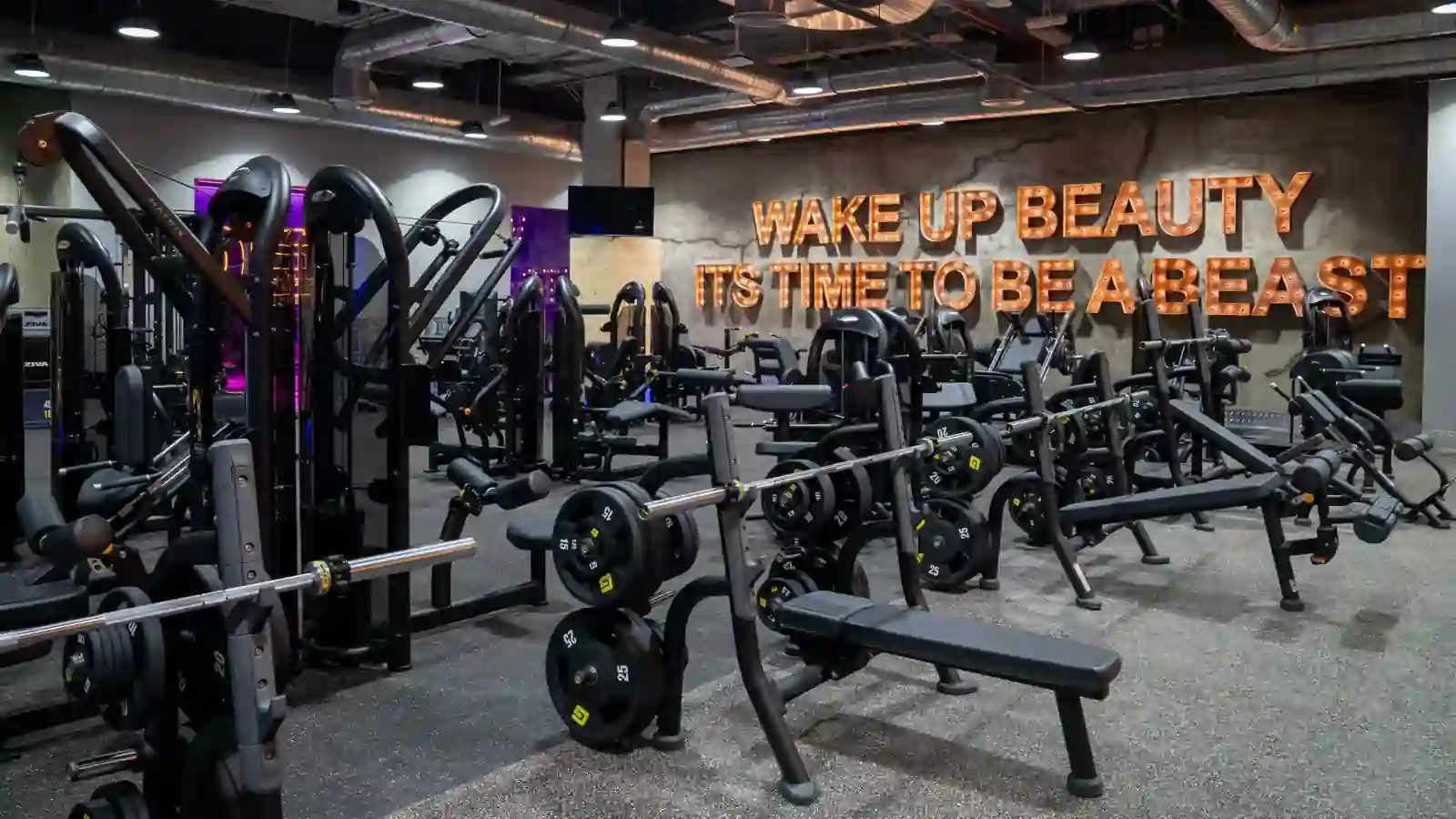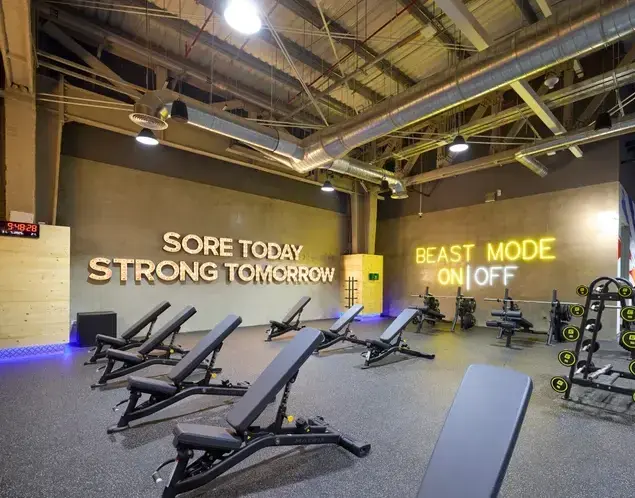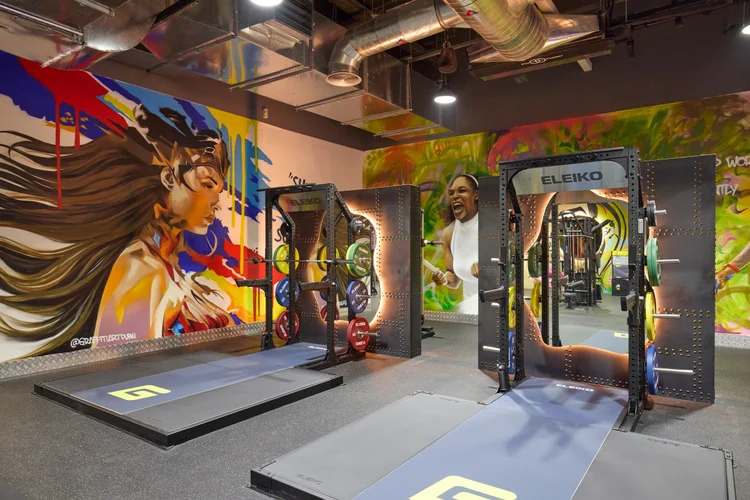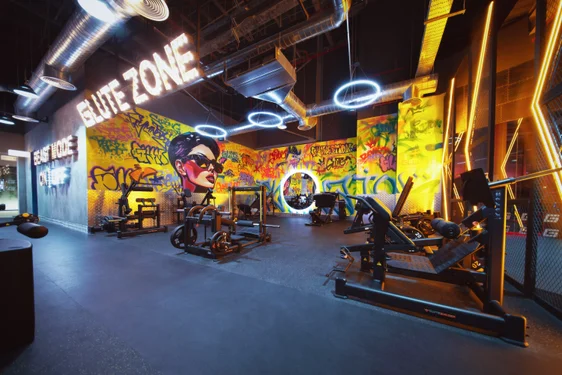The Complete HYROX Training Guide: Build Strength, Speed, and Mental Toughness
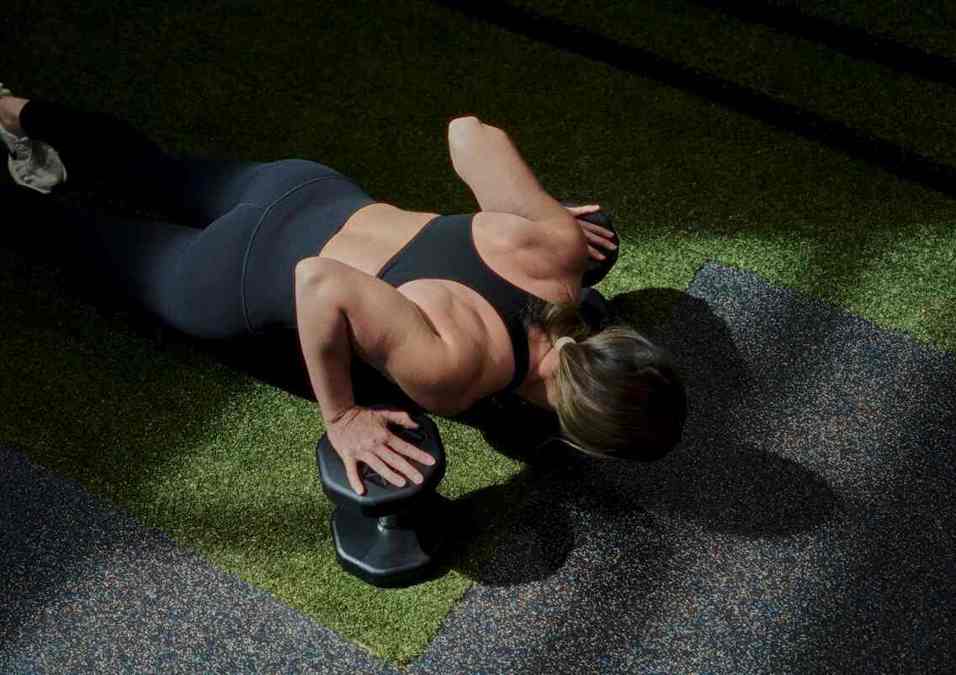
SIGN UP FOR YOUR FREE DAY PASS TODAY!
Picture this: AC/DC's "Hell's Bells" blares as 15 athletes line up at the start, adrenaline pumping through their veins.
In seconds, they'll sprint through a grueling fitness course featuring everything from sled pushes to burpees and rowing—all in pursuit of HYROX glory.
Since launching in 2017, HYROX has exploded into a global phenomenon.
The 2024-25 season spans five continents with over 650,000 participants competing in 40 races from London to Cape Town. With this massive appetite for the sport, you've probably considered signing up yourself.
We consulted amateur athletes, elite coaches, and top competitors to break down the essential elements of HYROX training—from building functional strength to conquering lactate thresholds while staying mentally sharp under pressure.
What's your go-to workout time?
Building Functional Strength
The Beginner Approach
Tommy Hatto exemplifies the accessible nature of HYROX. After completing two British races in his first year, he achieved a respectable time of just under 1 hour 28 minutes. "I'm new to the sport and loving it," he says.
Hatto's foundation centers on compound lifts—exercises familiar to most gym-goers. "I'll have days focusing purely on strength with compound exercises like squats, military press, and bench press," he explains.
While not directly mirroring specific HYROX stations, this general strength training effectively builds his foundation.
He creates hybrid HYROX drills by adding runs between compound lift sets. As competition approaches and base strength develops, he transitions from compound lifts to practicing actual HYROX stations.
"Compound lifts build my fitness foundation. Closer to competition, it's about applying that strength by focusing on the eight actual course movements," Hatto says.
The Expert Perspective
Pro coach Lauren Calvert, who trains athletes like Gabriella Moriarty, emphasizes timing-based programming.
"If competition is approaching, lactate tolerance and race-pace work take priority. During off-season, strength and aerobic capacity get more attention," she explains.
Strategic scheduling matters: "Heavy lower body strength training should be placed 24-48 hours away from demanding lactate sessions to avoid compromised performance and recovery."
For instance, clients might do heavy squats and plyometric training Tuesday morning, followed by track work Wednesday evening.
The Champion's Method
At 48, Samantha Bilbie serves as both coach and HYROX Age Group European and World Champion for 2023, 2024, and 2025, holding four age group world records. Her success stems from periodization.
"Off-season strength training looks completely different from competition phase training," she notes. "I keep elements separate early on to build solid foundations using low reps at high intensity with plenty of rest."
Like Hatto, she favors heavy compound lifts for foundation building. "Just before races, I mix heavy lifts with fast, lighter movements, HYROX-specific exercises, and running."
Developing Speed and Efficiency
Remember: HYROX is ultimately a race where speed matters.
Building Power
"Plyometric work gets very overlooked," says Gabriella Moriarty. "It helps you get faster, especially single-leg movements like hopping and quick feet drills like box jumps."
For mental speed and coordination during stations like wall balls, Moriarty recommends simulation training.
"Adding time constraints to stations like sled pulls really sharpens my focus. Routine and diet keep me mentally sharp—I'm like a metronome."
Coaching Wisdom
Swedish HYROX coach Peter Sjöberg understands that "running on fatigued legs represents one of HYROX's toughest challenges" and that "transitions can cost precious seconds if you're unprepared."
Daniela Weber, athlete and coach at Austria's King Kong Club, emphasizes addressing weaknesses first.
"People typically stick to their strengths and neglect weaknesses. Turning weaknesses into strengths brings huge progress."
Sjöberg recommends brick-style workouts: "Alternate between running and HYROX stations in sequences—like 800m run, 20 wall balls, 800m run, 25m sled push.
This conditions your body for compromised running while teaching breathing control and efficient technique under fatigue."
Elite Performance
Drawing on her running background, Bilbie programs clients primarily as runners, incorporating these track drills:
- A Skip: Improves knee drive and foot position
- B Skip: Enhances leg extension and hip mobility
- Butt Kicks: Engages hamstrings and promotes turnover
- High Knees: Develops hip flexor strength
- Plyometrics: Frontal and lateral single-leg hops
- Strides: 50-60m fast runs with proper form
Conquering Lactate Tolerance
Lactate tolerance remains crucial for any sport. When we push hard, our bodies shift from aerobic to anaerobic respiration, creating painful lactic acid buildup—that familiar "stitch" feeling.
Mental Preparation
"Nothing should surprise you on race day," Moriarty emphasizes. "Many sessions involve wading through lactic acid. Racing confidence comes from surviving lactate sessions and pushing through."
The key is persistence while remembering past victories. "Tough sessions test us as athletes. When it hurts, I focus and give everything.
Pain is temporary, but results from digging deep are forever rewarding."
Technical Approach
"HYROX is essentially sustained effort with intensity spikes," explains Sjöberg.
"Exceptional aerobic base allows athletes to control heart rate, recover between stations, and maintain pace. Without it, fatigue compounds quickly."
Success requires "functional strength endurance—you need muscular endurance, not just strength. The athlete who keeps moving under load wins."
Elite Training
Bilbie trains around her lactate threshold during pre-season.
"Threshold training is crucial. Frequent exposure teaches our bodies to better tolerate and clear lactate while maintaining higher intensities longer."
Sample Double Session:
- AM: 10-minute warmup, 20-30 minutes at lactate threshold, 10-minute cooldown
- PM: 10-minute warmup, 6-10 x 400m at threshold-to-VO2 max with 60-90 second recovery, 10-minute cooldown
Developing Mental Toughness
Mental strength often determines who keeps moving when bodies want to quit.
Breaking It Down
Newcomer Hatto manages pressure by focusing on individual stations. "I tell myself, 'Just commit to finishing this station,' which helps me focus on movement quality.
Getting caught up in distance to finish hurts my mindset."
He also uses visualization: "I picture my target results and times in the weeks before events, thinking like an athlete throughout training."
Coaching Philosophy
For Bilbie, strength comes from embracing discomfort. "We regularly expose ourselves to training discomfort to simulate race day feelings, but most athletes still experience negative self-talk.
Managing your mind significantly impacts race performance."
Champion Mindset
Elite racer Lucy Procter, HYROX World Champion in the 16-24 age category, stays focused by taking stock: "Throughout races, I think, 'A few more reps and I'm moving to the next station,' talking myself through each moment."
After difficult stations, she gives herself encouragement: "I might think, 'That was tough, but keep going.'"
Elite competitor Jake Dearden, Men's Doubles World Champion, emphasizes sacrifice: "To be the best, you must prioritize HYROX above all else.
During struggles, I remember everyone who helped get me to the start line. I might hurt for an hour, but that's my job."
Fueling for Success
Completing HYROX without proper nutrition is impossible.
Smart Pre-Race Choices
Mixed World Champion Gabriella Moriarty focuses on intelligent pre-race decisions while transitioning toward fat adaptation.
"I rely on carbohydrates, healthy fats, and protein. My fat intake is higher than ever as my coach wants my body utilizing fat stores for energy. Race day means bagels and oats."
She's not entirely strict: "After races, I head out for pizza—my guilty pleasure."
Elite Nutrition
Procter keeps race day simple: "Pretty much porridge, bagels, and jam—preferably strawberry. I aim for 400 grams of easily digestible carbs.
I don't focus much on protein and keep fats low. I don't carb-load like many people do—I haven't found it particularly beneficial."
Whether you're a complete beginner or seasoned athlete, HYROX demands a comprehensive approach combining functional strength, speed development, lactate tolerance, mental toughness, and smart nutrition.
The beauty lies in its accessibility—anyone can start with basic compound movements and gradually build toward race-specific training.
Remember: every champion started as a beginner. Your HYROX journey begins with that first training session.
Source: redbull
The opinions shared in the GymNation blog articles are solely those of the respective authors and may not represent the perspectives of GymNation or any member of the GymNation team.
Frequently Asked Questions
What does HYROX training involve?
GET YOUR FREE TRIAL TODAY






















